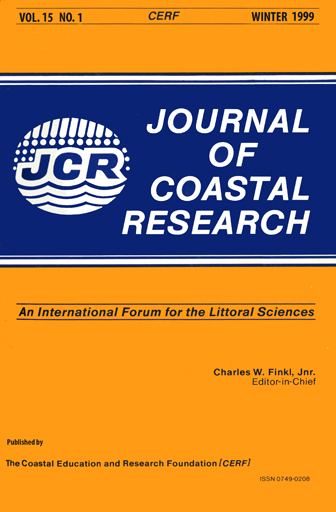Sand Re-Suspension Events in a High Energy Infragravity Swash Zone
Keywords:
Sand transport, suspension events, high energy beach, infragravity, swash.Abstract
Suspended sediment concentration (SSC), fluid velocity and morphological response were measured on the foreshore of a high energy dissipative beach west of Auckland, New Zealand. Swash re-suspension events exhibit a distinct temporal structure associated with both the uprush and backwash phases. SSC of > 50 gl -1 is associated with large accelerations, turbulence, and high flow speeds in shallow water under shoreward propagating swash bores. SSC decreases rapidly from the initial peak and then more gradually as water depth increases to a maximum at the end of the uprush. SSC increases gradually as the backwash accelerates, and then reaches a peak under the rapidly thinning and accelerating flow near the end of the backwash. Flows are super-critical, hydraulic jumps occur and unstable anti -dune bedforms often develop near the end of backwash events resulting in sharp increases in SSC. Event averaged SSC declines systematically as maximum depth of swash increases. Peak SSC tends to be larger under uprush events than backwash events particularly near the margins of the swash zone. Cross-spectral analysis of velocity and SSC at the transition between the inner surf zone and swash zone confirms that the dominant transport occurs at infragravity frequencies. Net transport is potentially sensitive to small variations in the phase angle between SSC and velocity in the uprush and backwash cycle as well as to the variability in bed conditions during swash cycles.Downloads
Published
1999-01-09
Issue
Section
Articles


